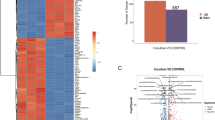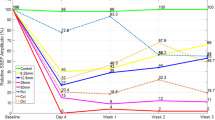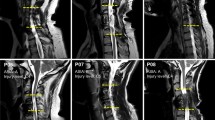Abstract
Fourteen cats were subjected to a moderate (100 gm-cm; n = 7) or a severe (600 gm-cm; n = 7) spinal cord injury at the C4-C5 level using a weight drop technique. Somatosensory evoked potentials (SSEPs) were recorded after stimulation of the median nerve in the forearm. The SSEPs were measured in each animal before and after the injury. Motor evoked potentials (MEPs) were recorded from forearm extensor muscles after transcranial magnetic stimulation of the motor cortex. The SSEPs and The MEPs were measured in each animal before and after the injury under ketamine-based anesthesia.
After the moderate injury (n =7), 83% of the animals (6/7) maintained the SSEPs and 100% (7/7) maintained the MEPs. Postoperatively, only one animal who lost the SSEPs post-injury became tetraplegic. The remainder were neurologically intact. In the severely injured animals (n = 7), 5/7 of animals lost SSEPs and subsequently became tetraplegic. The MEPS were maintained in 3/5 (60%) of these tetraplegic animals. Two of seven animals (40%) in this group did not lose SSEPs or MEPs and recovered with no clinical deficit.
Our data show a good correlation between the presence of SSEPs and functional recovery in the injured groups. The presence of MEPs in 3/5 (60%) of the tetraplegic animals may imply the existence of functionally active motor fibers after severe spinal trauma.
Similar content being viewed by others
Log in or create a free account to read this content
Gain free access to this article, as well as selected content from this journal and more on nature.com
or
References
Baskin D S, Simpson R K . Corticomotor and somatosensory evoked potentials evaluation of acute spinal cord injury in rats. Neurosurgery 1987; 20: 871–877.
Chen L, Houlden D A, Rowed DW: Somatosensory evoked potentials and neurological grades as predictor of outcome in acute spinal cord injury. J Neurosurg 1990; 72: 600–609.
Perot P L . Somatosensory evoked potentials in the evaluation of patients with spinal cord injury, in Morley TP (ed): Current Controversies in Neurosurgery. Philadelphia, W.B. Saunders, 1976, pp 160–167.
Eisen A, Aminoff MJ: Somatosensory evoked potentials, in Aminoff MJ (ed): Electro diagnosis in Clinical Neurology New York, Livingstone, 1986, pp 535–565.
Rowed D W . Value of somatosensory evoked potentials for prognosis in partial cord injuries, in Tator CH (ed): Early Management of Acute Spinal Cord Injury. New York, Raven Press, 1982, pp 167–180.
Sudo N . Clinical application of the evoked spinal cord potentials. Part 2: Neurophysiological assessment of the evoked spinal cord potentials in cervical lesions. Nippon Seikeigeka Gakkai Zasshi 1980; 54: 1649–1659.
Lesser R P, Raudzens P, Luders H, Nuwer M R, Goldie W D, Morris H H, Dinner D S, Klem G, Hahn J F, Shetter A G . Postoperative neurological deficits may occur despite unchanged intraoperative somatosensory evoked potentials. Ann Neurol 1986; 19: 22–25.
Mustain W D, ' Kendig R J . Dissociation of neurogenic motor and somatosensory evoked potentials: A case report. Spine 1991; 16: 851–853.
Barker A T, Jalinous R, Freeston I L . Non-invasive magnetic stimulation of the motor cortex. Lancet 1985; 1: 1106–1107.
Merton P A, Morton H B . Stimulation of the cerebral cortex in the intact human subject. Nature 1980; 285: 227.
Mills K R, Murray NMF. Corticospinal tract conduction time in multiple sclerosis. Ann Neurol 1985; 18: 601–605.
Mills K R . Magnetic brain stimulation: a tool to explore the action of the motor cortex on single human spinal motoneurons. TINS 1991; 14: 401–405.
Murray N M F . The clinical usefulness of magnetic cortical stimulation. Electroencephalogr Clin Neurophysiol 1992; 85: 81–85.
Boyd S G, Rothwell J C, Cowan J M A, Webb P J, Morley T, Asselman P, Marsden N C D . A method of monitoring function in corticospinal pathways during scoliosis surgery with a note on motor conduction velocities. J Neurol Neurosurg Psychiatry 1986; 49: 251–257.
Claus D . Central motor conduction method and normal results. Muscle Nerve 1990; 13: 1125–1132.
Cowan J M A, Dick J P R, Day B L, Rothwell J C, Thompson P D, Marsden C D . Abnormalities in central motor pathway conduction in multiple sclerosis. Lancet 1984; 2: 304–307.
Edmonds H L, Paloheimo M P J, Backman M H, Johnson J R, Holt R T, Shields C B . Transcranial magnetic motor evoked potentials (tcMMEP) for functional monitoring of motor pathways during scoliosis surgery. Spine 1989; 14: 683–686.
Hayes K C, Allatt R D, Wolfe D L, Kasai T, Hsieh J . Reinforcement of motor evoked potentials in patients with spinal cord injury, in Levy WJ, Cracco RQ, Barker AT, Rothwell JC (ed): Magnetic Motor Stimulation: Basic Principles and Clinical Experience. EEG Suppl 43, 1991, pp 312–329.
Kalkman C J, Drummond J C, Kennelly N A, Patel P M, Partridge B L . Intraoperative monitoring of tibialis anterior muscle motor evoked responses to transcranial electrical stimulation during partial neuromuscular blockage. Anesth Analg 1992; 75: 584–589.
Brouwer B, Bugaresti J, Ashby P . Changes in corticospinal facilitation of lower limb spinal motor neurons after spinal cord lesions. J Neurol Neurosurg Psychiatry 1992; 55: 20–24.
Herdmann J, Dvorak J, Bock W J . Motor evoked potentials in patients with spinal disorders: Upper and lower motor neurons affection. Electromyogr Clin Neurophysiol 1992; 32: 323–330.
Machida M, Yamada T, Krain L, Toriyama S, Yarita M . Magnetic simulation: Examination of motor function in patients with cervical spine or cord lesion. J Spinal Disord 1991; 4: 123–130.
Segura M J, Gandolfo C N, Sica R E P . Electrophysiological assessment of spinal cord lesions by means of transcranial cortical stimulation. Electromyogr Clin Neurophysiol 1992; 32: 299–306.
Thompson P D, Dick J P R, Asselman G B, Griffin G B, Rothwell J C, Sheely M P, Marsden C D . Examination of motor function in lesions of the spinal cord by stimulation of the motor cortex. Ann Neurol 1987; 21: 389–396.
Booth K R, Streletz L J, Raab V E, Kerrigan J J, Alaimo M A, Herbison G J . Motor evoked potentials and central motor conduction: studies of transcranial magnetic stimulation with recording from the leg. Electroencephalogr Clin Neurophysiol 1991; 81: 57–62.
Snooks S J, Swash M . Motor conduction velocity in the human spinal cord: Slowed conduction in multiple sclerosis and radiation myelopathy. J Neurol Neurosurg Psychiatry 1985; 48: 1135–1139.
Ingram D A, Swash M . Central motor conduction is abnormal in motor neuron disease. J Neurol Neurosurg Psychiat 1987; 50: 159–166.
Dimitrijevic M R, Dimitrijevic M M, Faganel J, Sherwood A M . Suprasegmentally induced motor unit activity in paralyzed muscles of patients with established spinal cord injury. Ann Neurol 1984; 16: 216–221.
Dimitrijevic M R, Eaton W J, Sherwood A M, Linden V D . Assessment of corticospinal tract integrity in human chronic spinal cord injury, in Rossini PM, and Marsden CD(ed): Neurology and Neurobiology, Vol. 41: Non-Invasive Stimulation of Brain and Spinal Cord; Fundamentals and Clinical Applications. Alan R. Liss Inc.: NY, 1988, pp 243–253.
Dimitrijevic M R : Neurophysiology in spinal cord injury. Paraplegia 1987; 25: 205–208.
Gianutsos J, Eberstein A, Ma D, Holland T, Goodgold J . A non- invasive technique to assess completeness of spinal cord lesions in humans. Exp Neurol 1987; 98: 34–40.
Kakulas B A : The clinical neuropathology of spinal cord injury: A guide to the future. Paraplegia 1987; 25: 212–216.
Kakulas B A, Bedbrook G M . Pathology of injuries of the vertebral column with emphasis on the macroscopic aspects, in Vinken PJ and Bruyh GW (ed): Handbook of Clinical Neurology: Injuries of the Spine and Spinal Cord, New York, Elsevier Publication Co, 1976, pp 27–42.
Author information
Authors and Affiliations
Rights and permissions
About this article
Cite this article
Haghighi, S., York, D., Spollen, L. et al. Neurophysiological evidence of spared upper motor neurons after spinal cord injury. Spinal Cord 34, 39–45 (1996). https://doi.org/10.1038/sc.1996.7
Issue date:
DOI: https://doi.org/10.1038/sc.1996.7



